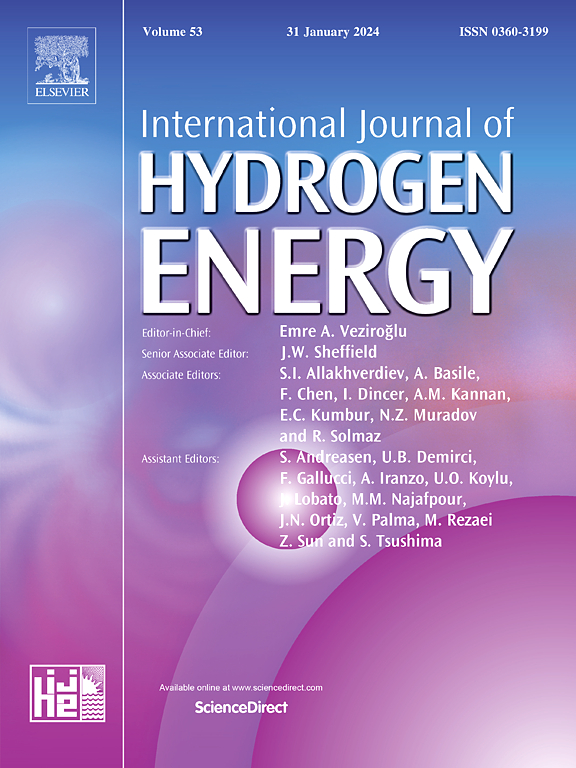面向控制的单电池质子陶瓷电化学反应器单级氨裂解压缩氢的建模与观察
IF 8.3
2区 工程技术
Q1 CHEMISTRY, PHYSICAL
引用次数: 0
摘要
最近提出了一种新型的质子陶瓷电化学反应器,用于从氨中高效提取氢。该反应器将热管理、氨脱氢、氢分离和压缩集成到一个单一的流线型过程中。尽管具有潜力,但反应堆的运行和监测仍面临重大挑战。有效管理电、化学和热过程之间复杂的非线性相互作用对于避免性能下降和确保这种新型电化学反应器的安全运行至关重要。我们的贡献是通过两项关键创新应对这些挑战的第一步。首先,我们介绍了一个面向控制的、计算效率高的电化学反应器单单元模型。其次,我们利用该模型开发了基于观测器理论的软传感器,该软传感器使用实时测量来估计陶瓷膜两侧氢气的质量分数和分压以及膜面积比电阻。本文章由计算机程序翻译,如有差异,请以英文原文为准。

Control-oriented modeling and observation of a single cell proton ceramic electrochemical reactor for single-stage ammonia cracking to compressed hydrogen
A novel proton ceramic electrochemical reactor has recently been proposed for the efficient extraction of hydrogen from ammonia. This reactor integrates heat management, ammonia dehydrogenation, hydrogen separation, and compression into a single, streamlined process. Despite its potential, the operation and monitoring of the reactor pose significant challenges. Effective management of the complex nonlinear interactions between electrical, chemical, and thermal processes is essential to avoid performance degradation and ensure safe operation of this new electrochemical reactor. Our contributions are a first step for addressing these challenges through two key innovations. First, we introduce a control-oriented, and computationally efficient model for a single cell of the electrochemical reactor. Second, we leverage this model to develop a soft sensor based on observer theory, that uses real-time measurements to estimate the hydrogen mass fraction and the partial pressures of hydrogen at both sides of the ceramic membrane and the membrane area specific resistance.
求助全文
通过发布文献求助,成功后即可免费获取论文全文。
去求助
来源期刊

International Journal of Hydrogen Energy
工程技术-环境科学
CiteScore
13.50
自引率
25.00%
发文量
3502
审稿时长
60 days
期刊介绍:
The objective of the International Journal of Hydrogen Energy is to facilitate the exchange of new ideas, technological advancements, and research findings in the field of Hydrogen Energy among scientists and engineers worldwide. This journal showcases original research, both analytical and experimental, covering various aspects of Hydrogen Energy. These include production, storage, transmission, utilization, enabling technologies, environmental impact, economic considerations, and global perspectives on hydrogen and its carriers such as NH3, CH4, alcohols, etc.
The utilization aspect encompasses various methods such as thermochemical (combustion), photochemical, electrochemical (fuel cells), and nuclear conversion of hydrogen, hydrogen isotopes, and hydrogen carriers into thermal, mechanical, and electrical energies. The applications of these energies can be found in transportation (including aerospace), industrial, commercial, and residential sectors.
 求助内容:
求助内容: 应助结果提醒方式:
应助结果提醒方式:


